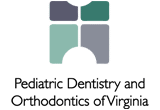 An estimated eight to 16 percent of adults and about 14 to 20 percent of children have bruxism. This is a complicated-sounding dental term, but the condition is one you’ve probably heard of: teeth grinding or clenching.
An estimated eight to 16 percent of adults and about 14 to 20 percent of children have bruxism. This is a complicated-sounding dental term, but the condition is one you’ve probably heard of: teeth grinding or clenching.
Mayo Clinic explains:
“Bruxism (BRUK-siz-um) is a condition in which you grind, gnash or clench your teeth. If you have bruxism, you may unconsciously clench your teeth when you’re awake (awake bruxism) or clench or grind them during sleep (sleep bruxism).”
In some cases, bruxism is minor and causes no problems. However, in severe cases, it can lead to a variety of dental issues.
What Causes Bruxism?
There are many factors that may contribute to teeth grinding and clenching. Since it tends to be more common in children, getting older may decrease your child’s risk, and at some point he or she may outgrow the condition. Some of the risk factors include the following:
Stress: Anxiety, anger, and frustration, as well as having a hyperactive or aggressive personality, can lead to bruxism.
Psychological Disorders: “A child with a psychological disorder had a 3.6 times greater likelihood of bruxism.” Sleep disorders like sleep apnea may contribute to the condition as well.
Family History: Sleep bruxism in particular may run in families.
There are many problematic effects of bruxism for both adults and children. With severe grinding or clenching, you or your child might experience some of the following complications:
- Damaged or broken teeth or dental work like crowns and fillings
- Headaches
- Ear pain
- Jaw pain and temporomandibular jaw disorders (TMJ)
- Receding gums
- Insomnia
- Depression
These unfavorable effects might be your only symptoms of bruxism. You might not realize you clench or grind your teeth, especially if you do it while you’re sleeping. However, if you notice any of the effects listed above, or if your child complains of muscle tenderness in the jaw or sudden sensitivity in the teeth to heat, cold, or sweets, you should take your child to see the dentist.
Treatment for Bruxism
The U.S. National Library of Medicine explains that your dentist may suggest a mouth guard to protect your teeth at night. There are also several different types of splints that can reduce clenching. If the first one doesn’t work for you, you might have more success with a different type.
There are also a variety of self-care tips that may help you ease the symptoms and prevent the condition.
- Practice stress relief techniques, like deep breathing, yoga, and meditation, or anything that helps you have fun and relax.
- Avoid hard-to-chew foods, and don’t chew gum.
- Drink lots of water.
- Sleep well! Try turning off your digital devices at least an hour before bed, keep your bedroom dark, quiet, and cool, and aim to go to sleep and wake up at the same time each day.
- Focus on relaxing your face throughout the day.
- Learn some stretches to ease tension in your head, neck, and jaw. (Your dentist can help you with this.)
- You may also be able to teach yourself to stop clenching your teeth by becoming more aware of your grinding or clenching habits throughout the day, although this particular technique is not as effective for sleep bruxism. Orthodontic treatments to bring the teeth into their optimal alignment may also help.
If you suspect bruxism in your children, don’t worry. It’s not dangerous, but it can lead to discomfort and some inconvenient dental work if the grinding is severe enough to damage the teeth. Make an appointment at Pediatric Dentistry and Orthodontics of Virginia and ask for your child’s dentist’s professional opinion. He or she can also suggest some at-home tips for your child to try, and will guide you in the best treatment for your child.
